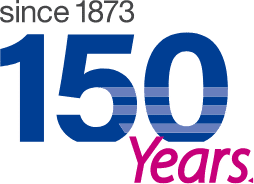Why protective screening?
Protective screening machines are used to remove foreign bodies and impurities from bulk materials.
This can be, for example, packaging residues or metallic parts such as screws that have accidentally got into the product. But foreign bodies can cause great damage not only in the end product, but also in the production process itself.
To ensure a consistently high quality of the end products, foreign bodies should not get into the sales packaging and must be separated out first. If this is not done, there is a risk of product contamination and, in the worst case, image-damaging product recalls. Metal parts can also damage the sensitive machine equipment and cause expensive repairs and production downtimes.
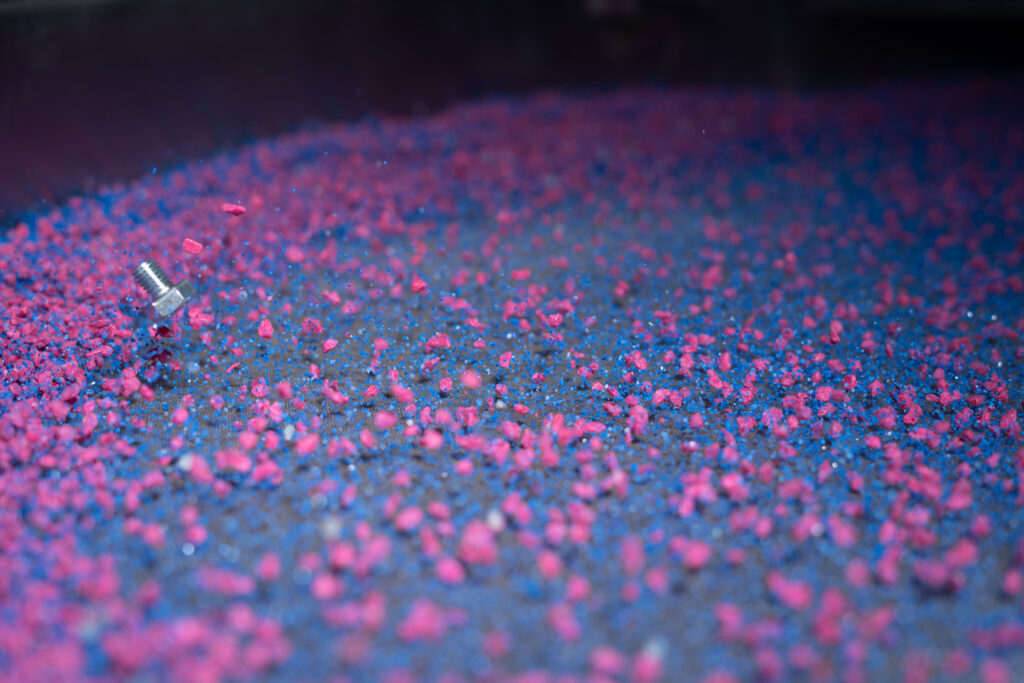
Prevent foreign bodies from entering the production process. And protect the product from contamination.
These are the main tasks of protective screens.
At which points in the production a protective screening is done?
Protective screenings are always used where the safety of a production process or the quality of a product could be endangered by contamination.
In principle, protective screenings can be implemented at any point in the process. However, there are some particularly typical applications.
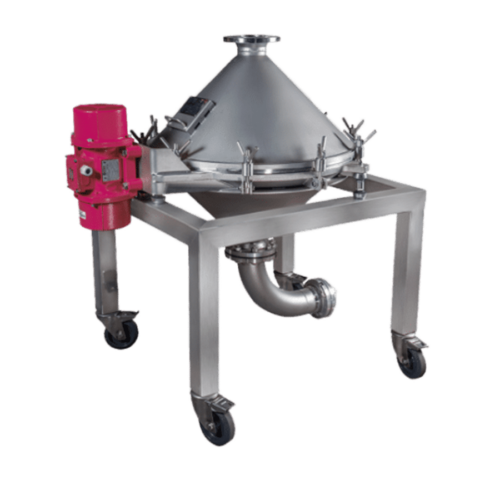
With the mobile tanker screening machine JEL TWS, foreign bodies can be separated before the product is conveyed into the silo. It can be docked and undocked in the blink of an eye.
1. When raw materials are delivered
Here, protective screening ensures that impurities and coarse particles do not even enter the production process or are stored within it. If the bulk material is delivered via tanker trucks or silo vehicles, tanker truck screens can be used. These are simply installed in the conveying line between the silo and the tanker and reliably separate any foreign bodies that are present.
2. In the production process
Protective screenings can also be found in production processes themselves. Unwanted components can not only enter the production process via the raw materials supplied. Contamination can also occur within the company’s own manufacturing processes. Metal or plastic parts of plant components can come loose during operation or maintenance work and unintentionally fall into the product stream. To ensure the required product quality, protective screens are used in particular at sensitive interfaces between important processing steps: e.g. before the product enters mixers, agitators or intermediate vessels. The screening machines often work in conjunction with other protective mechanisms, such as magnetic separators for the separation of the smallest metal particles that could pass through the screen mesh of the protective screen.
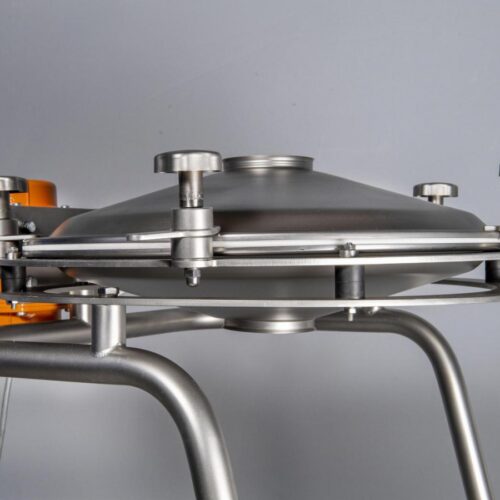
Special feature of the JEL Fix II protective and control screening machine: the screen basket is also vibrated, so that it can be used for products which are difficult to screen.
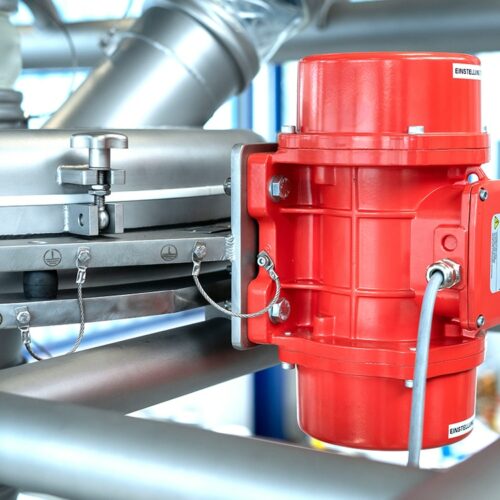
3. Before packing the end product
At the latest before the product is filled or packaged for sale, it must be ensured that it is free of all undesirable components. Impurities that remain undetected during this process step have a direct impact on the quality of the product at the customer.
Protective screening machines are therefore literally an important safety anchor in the final quality assurance of end products in many plants.
What makes a good protective sieve?
High throughput, easy handling and fast cleanability are important for the implementation of an efficient protective screening.
Another aspect is a small footprint by a compact and space-saving design.
1. Compact construction with small footprint
Even though their function is enormously important, protective screening machines are rarely the heart of a plant. In most cases, they represent one of many necessary process steps that should be integrated into the production process in the most space-saving way possible.
To meet this requirement, the JEL Fix II, for example, has a very compact design. With a screening surface of 0.5m², the complete screen housing has a height of only 27 cm. Depending on requirements, the vibration screening machine for protective screenings can be designed with or without a base frame (either stationary or mobile). Without a base frame, the protective sieve is fitted into systems as an additional component: seamlessly integrated into the system environment as part of emptying, filling or mixing processes.
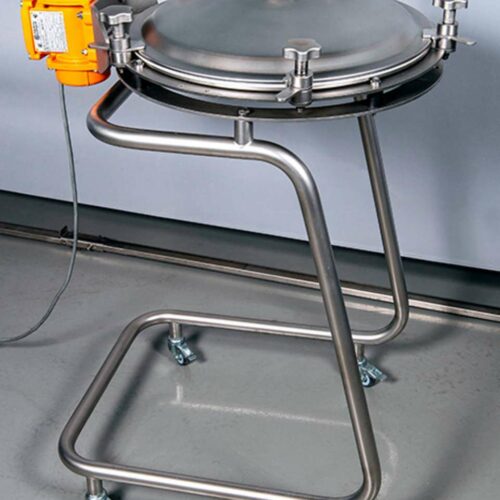
The round screening machine JEL Fix II can be used for protective and oversize screenings. It can be permanently installed in a plant or designed as a mobile version.
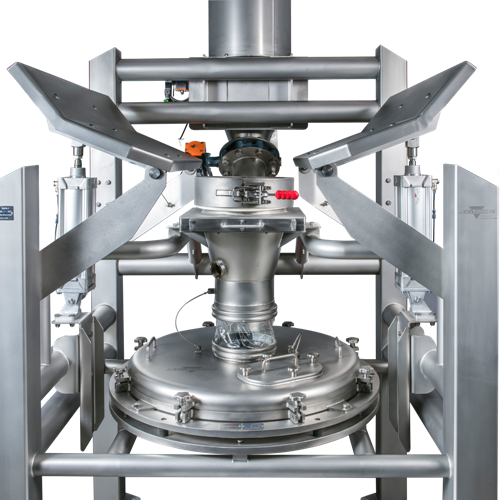
Thanks to its compact design, the JEL Fix II can be integrated as a protective screen, e.g. in big bag stations. Even retrofitting in existing systems is possible.
2. High throughput? Avoid plug-in grain!
The throughput of a protective screening machine must be precisely matched to the production process so that the screened product is always available in sufficient quantity and in the optimal size of particles.
The throughput capacity of a screening machine depends first of all on the screening surface. It makes sense, for example, to use adjustable imbalance discs on the vibration motor to adjust the performance of the sieve at a later date and adapt it to different bulk materials and product quantities.
Another factor that influences the throughput capacity of a screening machine is the formation of plug-in grains. The term “plugged grain” is used to describe product particles that become jammed or stuck in the meshes of the screen fabric during the screening process. Special screen cleaning systems are used to prevent the screen fabric from becoming clogged and the machine from losing throughput. With the Jel Fix II, for example, you can choose between ball, triangular or ultrasonic cleaning for particularly fine powders.
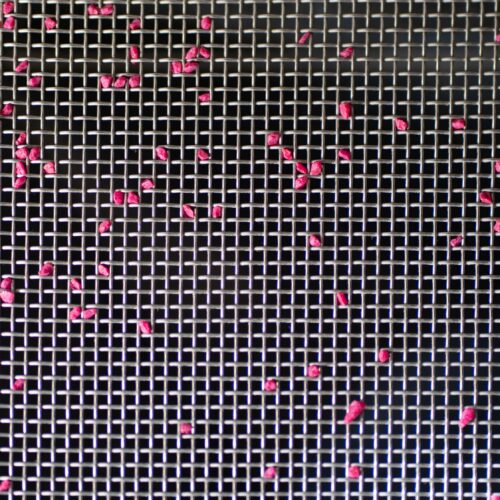
If plugged grain clogs the screen mesh, throughput drops.
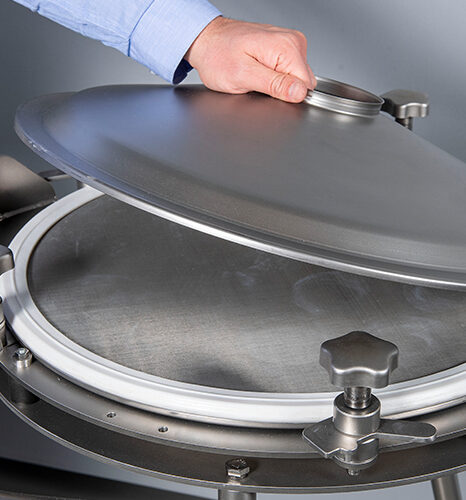
Cleaning systems in various designs keep the screen mesh permanently free.
3. Easy handling
Handling also plays a major role. Cleaning, changing the sieve insert, product-specific adjustments to the sieve setting – ideally, everything is designed in a way that allows the operator to work intuitively and without tools.
For the most thorough cleaning possible and short set-up times, it is also helpful that the protective screening machine can be dismantled in just a few steps. For example, the cover and the lower part of the sieve housing must be easy to separate from each other. This is also important when changing the sieve inserts. Quick release systems or star grips have proven to be the best solution.
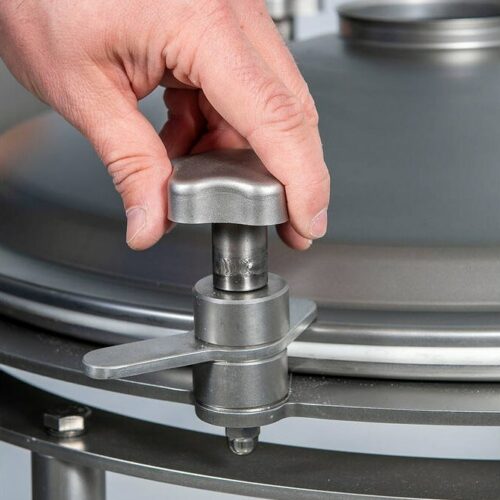
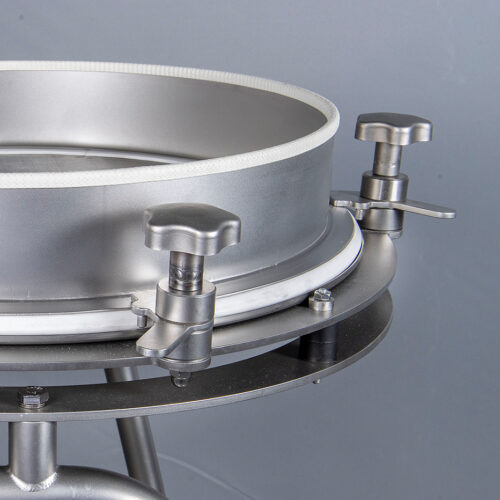
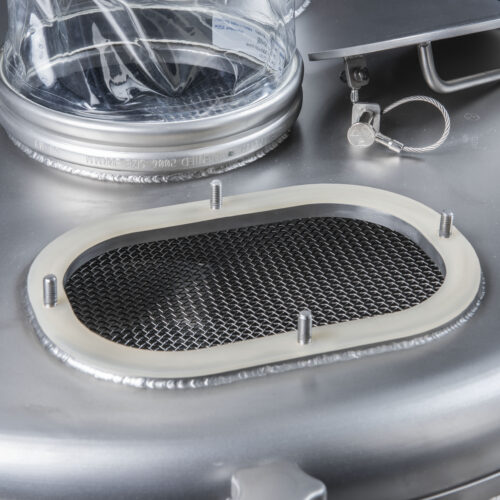
All parts are easily accessible and can be operated without tools. The lower part and cover of the JEL Fix II can be removed individually from the basic frame. With an edge attachment, open operation is also possible if required. Numerous additional features are available. With the JEL Fix II, Engelsmann thus offers a very simple protective screen concept that works reliably in practice.
4. Cleanability and hygiene
Many industries place high hygiene requirements on the production equipment used. Protective screening machines are no exception. The avoidance of product storage areas and dead spaces as well as good accessibility to all parts is therefore a top priority.
Frame racks made of stainless steel, extended radii at corners and edges and various surface treatments and roughness depths are only the first elements of a comprehensive hygiene concept. Base frames made of round tubes, for example, are less susceptible to product deposits than square profiles. They are also easier to clean and splash water flows off more easily.
The inside of the sieve trough in particular must be hygienic: profile seals in plug-in design can, for example, simply be pulled off during cleaning and then reinserted. Ideally, they are made of silicone, TPE or other compliant materials according to FDA or EC 1935/2004 standards.
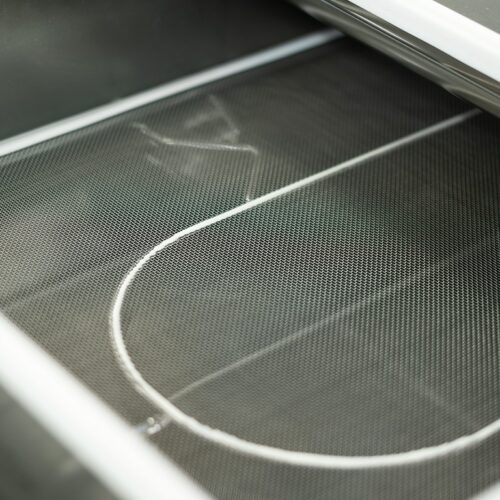
Pharmaceuticals
Smooth surfaces: the JEL Konti II for protective screening in the production of pharmaceutical products
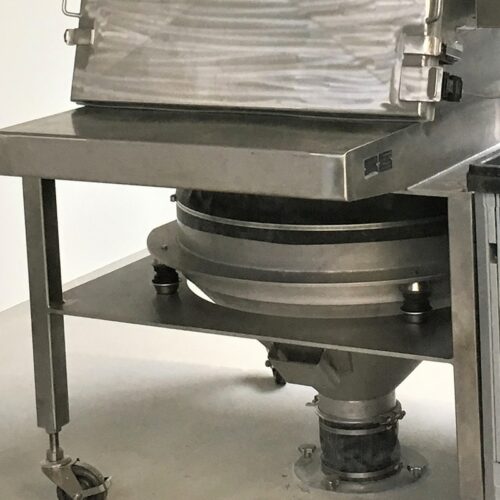
Chemicals:
Jel Fix as an integrated protective sieve below a sack chute
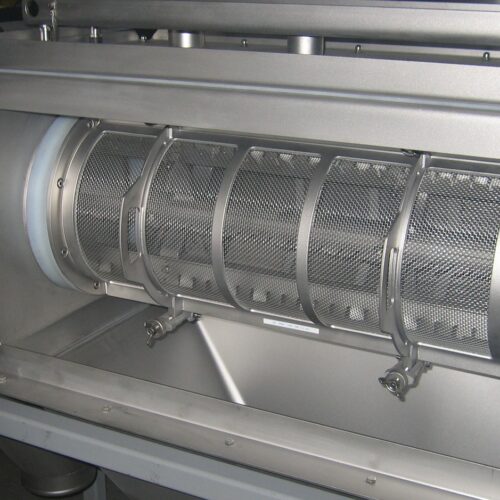
Food
Centrifugal screening machine JEL Viro for protective screening of greasy products
Conclusion: Protective screening is an important component in the quality assurance of intermediate and end products.
Operators have three main requirements:
It must be possible to integrate the screening machine into the plant environment in a neat and space-saving manner.
Operation and maintenance must be as simple as possible.
The protective sieve must allow a quick and thorough cleaning.

